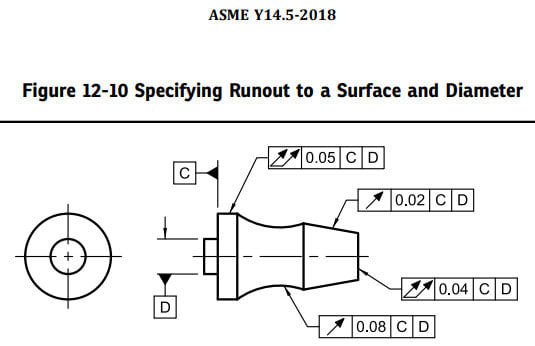Burunduk
Mechanical
- May 2, 2019
- 2,577
In runout examples 7-61, 7-63, and 12-2 of Y14.5-2018, the primary datum feature establishes the axis of rotation and constrains 4 degrees of freedom, thus stopping the relevant rotations and translations to allow the tolerance zone limit the feature. The secondary datum feature is an end face, not applying any rotational constraints to the part relative to the datum reference frame. The translational constraint applied by the end face has no relevance, since runout doesn't control location in the axial direction. Then what value does the secondary reference add?
Of the three figures, I can only see how it contributes in defining the limited area for check on the cylindrical feature in 12-2, but not useful for the cone control.
BTW, speaking of 12-2 is it just me or there are multiple errors with how the tolerance zones and limited variations are shown?
Of the three figures, I can only see how it contributes in defining the limited area for check on the cylindrical feature in 12-2, but not useful for the cone control.
BTW, speaking of 12-2 is it just me or there are multiple errors with how the tolerance zones and limited variations are shown?

